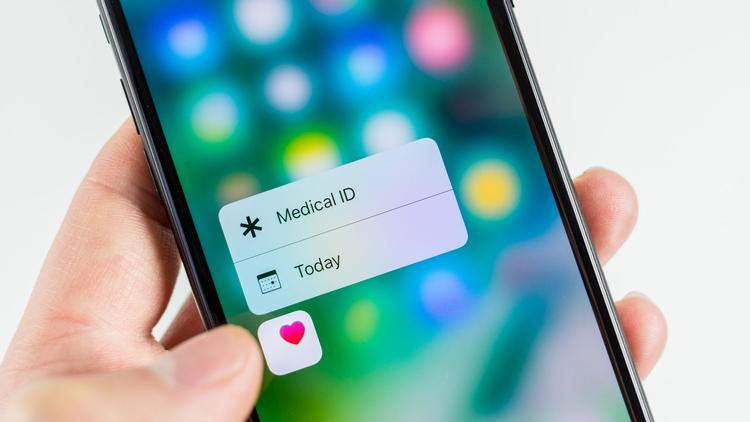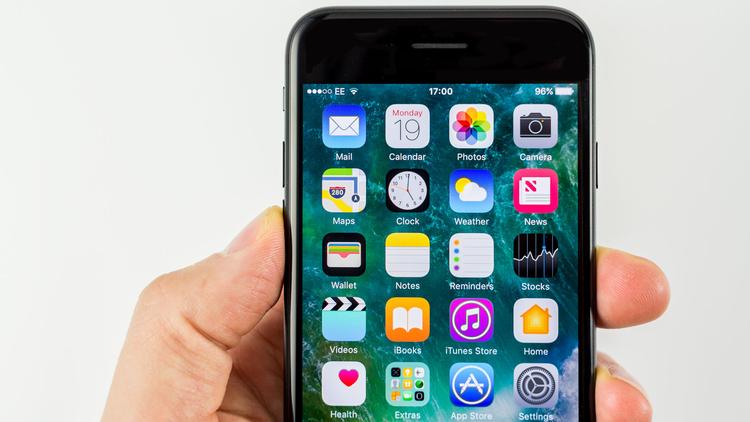The Note 7 has been out for around for quite a few weeks now, but Apple’s phablet has only just gone on sale. We’ve based this comparison about our more in-depth testing and use of the Note 7, and only limited hands-on time with the iPhone 7 Plus. We’ll know more in a couple of weeks when we have tested the iPhone 7’s camera, battery life and performance more fully. It’s worth dealing with the elephant in the room at the start: the Note 7’s reputation has been tarnished by the exploding battery saga. This affected a small number of phones, and Samsung is recalling and replacing phones to fix this. If you’re reading this to decide which to buy, don’t let this sway your choice. Buy a Note 7 now, and it should be fine.
iPhone 7 Plus vs Galaxy Note 7: Price
Since it has a microSD slot, Samsung opted to make things simpler by offering the Note 7 in just one capacity: 64GB. This costs £699 from Carphone Warehouse, with prices ranging up to £749 depending on where you buy. You do get a choice of colours, though: Gold Platinum, Silver Titanium, Black Onyx and Blue Coral. The iPhone 7 Plus comes in three capacities, 32GB (£719), 128GB (£819) and 256GB (£919). It also comes in five colours, including the two new black options: Black (matt) and Jet Black (glossy piano black). You can buy the iPhone 7 Plus from Apple’s website. So the Note 7 is cheaper, even if you buy a fast 128GB microSD card. But 256GB (or 200GB) microSD cards are still expensive.
iPhone 7 Plus vs Galaxy Note 7: Design
Design is a personal thing, but many people like the Note 7’s styling. It borrows heavily from the Galaxy S7 Edge, and also has a curved glass rear. As much as you can differentiate a phone when you’re restricted by the dimensions of a 5.7in screen, Samsung’s phablet is one of the prettiest around. Apple has chosen to keep the form factor introduced with the iPhone 6 Plus in 2014, which is still a decent one. The screen curves to meet the edges of the aluminium chassis and the 7 Plus feels great in the hand. The new polished Jet Black model is particularly nice as you can’t easily see where the screen joins the frame, making for a seamless appearance. However, some have reported that this finish is easily scratched. And as soon as you touch it, fingerprints and marks are obvious, so it’s a high-maintenance option – and it’s not available with a 32GB capacity. The problem with the new iPhone is that apart from the dual-camera at the rear, the new colours are the only things that differentiate it from the last two big iPhones. And some people want a new look. It’s also hard not to criticise Apple for sticking with the same 5.5in screen and not slimming down the screen bezels – particularly at the top and bottom. The iPhone has a new trick: water resistance. It’s only IP67 against the Note 7’s IP68 certification but the difference is relatively minor. Samsung’s phone will survive under 1.5m of water for up to 30 minutes, while the iPhone can only be submerged to 1m. In practice, no-one is going to take a tape measure under water to check, so shallow underwater photography and videos are all you’ll be able to take and both devices will survive a drop into the bath. One of the bigger talking points is the fact that there’s no headphone jack on the 7 Plus (or its smaller brother). This has been done to remove the old analogue port and make room for a bigger Taptic Engine – the device which enables haptic feedback for the new solid-state home button and throughout iOS 10. Apple bundles an adaptor so you can connect standard headphones to the Lightning port, so the only real issue is that you can’t do this and charge the phone at the same time. You need a second adaptor cable for that, or you could use wireless headphones.
iPhone 7 Plus vs Galaxy Note 7: Screen
Both phones stick with essentially the same screens as their predecessors. We’ve mentioned the iPhone’s so let’s start with that. The 5.5in panel has the same 1920×1080 resolution (401ppi) as last year’s 6S Plus, but is 25 percent brighter and has ‘Wide Colour’ which means colours are a bit more vibrant. It may well be the best screen on an iPhone, but it still trails the 5.7in AMOLED screen on the Note 7, and not just in size. The 2560×1440 resolution – known as quadHD or 2K – means it can display a bit more detail from your 4K videos and photos, and AMOLED still out-punches the iPhone’s Wide Colour for gamut, although we need to use our colorimeter to see exactly how they compare. Some people prefer the more natural colours that LCD produces, disliking the “lurid” hues you typically see on AMOLED screens, but this is again personal preference. Put simply, both phones have excellent screens which are great quality. Before we move to cameras, there’s a little more to be said about screens. The iPhone 7 Plus supports 3D Touch (like the 6S Plus) but Apple has added support for more apps and features in iOS 10. It takes some effort to learn what you can do, and how to do it, but it genuinely does add another dimension to navigating and using the iPhone. You can launch an app with the specific setting or feature you’re after, and it’s now possible to use 3D Touch in the Control Centre as well for quickly setting a timer, or changing the brightness of the LED torch. The Note 7, meanwhile, offers the S-Pen. This is a completely different approach to a pressure-sensitive screen and has 4,096 levels of sensitivity (probably many more than is really necessary). The S-Pen is used for completely different tasks to 3D Touch of course, and is handy for scribbling notes, sketches and doing plenty of other things besides. In our experience this is something that some people love and use all the time, or leave it in its holder and never use it.
iPhone 7 Plus vs Galaxy Note 7: Cameras
It’s here that the iPhone edges ahead. The Note 7 takes the Galaxy S7’s 12Mp camera and doesn’t get an upgrade. That’s no bad thing: it’s a brilliant camera which takes great photos and videos in a wide range of scenarios and lighting conditions. Photos shot in low light are particularly impressive for a phone camera. We’ve yet to properly test out the 7 Plus’ cameras – all three of them. On the rear is a bulge which houses a wide-angle lens (similar to that on the 6S Plus) and a telephoto lens, which effectively give a 2x optical zoom. Using a new, speedier image signal processor, you can ‘zoom’ between the two cameras, and then use digital zoom up to 10x for photos and 6x for videos. We’re firm believers in never using digital zoom, but even if you stick with the two focal lengths offered by the two lenses, this does offer a benefit the Note 7 can’t. From the photos we’ve seen from the 7 Plus (which still shoots at 12Mp), it looks like Apple is edging ahead over its rivals here, and the f/1.8 aperture also helps it (as does the Note 7’s f/1.7 lens) when light is low. You also get the benefit of a new sensor which supports the same Wide Colour gamut as the screen, which means colours can be more vibrant – also in low light. iPhone 7 Plus owners will soon get a software update to the camera app which enables blurry backgrounds – the much loved Bokeh effect you see in DSLR portraits – but as this is software-based we need to see just how effective it is. If you’re serious about photography, the new iPhone also supports RAW + JPEG capture, but not in the default camera app. You can also choose to shoot in RAW on the Note 7. Around the front, the Note has a 5Mp camera, the iPhone 7 an upgraded 7Mp sensor. We haven’t yet tested the latter, so it’s impossible to come to a conclusion as to which is better. It’s likely to be a close-run thing.
iPhone 7 Plus vs Galaxy Note 7: Performance
We haven’t benchmarked the iPhone 7 Plus yet, but looking at Geekbench 4 scores around the web, it outperforms the Note 7 but a big margin, especially the Snapdragon 820 version. The Samsung Exynos 8890 (which is octacore versus the 820’s quad-core design) is faster, but it’s still behind Apple’s quad-core A10 Fusion chip. Here are the scores (single core / multicore):
iPhone 7 Plus: 3367 / 5491Note 7 (Snapdragon 820): 1666 / 3757Note 7 (Exynos 8890): 1880 / 5326
Although the Exynos-toting Note 7 almost matches the iPhone on its multicore performance, the iPhone is roughly twice as quick as both versions of the Samsung phone when using only one processing core. That’s a huge difference. To put the results in context, the iPhone 7 Plus beats every Macbook Air and is about as powerful (in this particular test) as a 2013 MacBook Pro. Ifixit’s teardown has revealed the iPhone has a 2900mAh battery (a little bigger than the 6S Plus). The Note 7 has a 3500mAh battery, which in our general use lasts around 24 hours with 15 percent remaining. It’s too early to say whether the iPhone matches this, but you can’t simply compare their capacities and declare the Note the winner: it’s all about power efficiency. Apple claims it will last around an hour longer than the 6S Plus, and that phone can go a day and a half with ‘normal’ use.
iPhone 7 Plus vs Galaxy Note 7: Software
While you can read our iOS vs Android comparison, we can go into the specifics a little more here. Samsung is one the companies which heavily modifies Android and changes quite a bit of the interface, from the home screens to the notification and shortcut bar and the settings app. Some like it, others don’t. It’s not easy to turn an Note 7 into a ‘stock’ Android phone, but you probably wouldn’t want to lose some of Samsung’s additions and tweaks, such as all the software which makes the S-Pen work. Samsung has also long been a proponent of multi-window and the Note 7 lets you run two apps side by side so you could have a YouTube video playing while you read your email or look at a map on the other half of the split screen. You can also reposition the divider to make one window larger than the other. Apple has introduced splitscreen on the iPad, but it’s yet to be seen on an iPhone. As with the other iPhone Plus models, you can run some apps in landscape, such as Mail and the home screen, but there’s no way to have two apps on screen at once. It doesn’t even support the iPad’s picture-in-picture mode for having a floating video window while you use another app. You could argue that a 5.5in screen is too small for multitasking, but it would be nice to at least have the option. However, one of iOS’s advantages is that it’s optimised to work on the iPhone’s hardware and it’s very slick indeed. iOS 10 adds a great number of new features and tweaks that make it even nicer to use, too. You’ll find much more in-depth information in our iOS 10 review. Jim has been testing and reviewing products for over 20 years. His main beats include VPN services and antivirus. He also covers smart home tech, mesh Wi-Fi and electric bikes.






